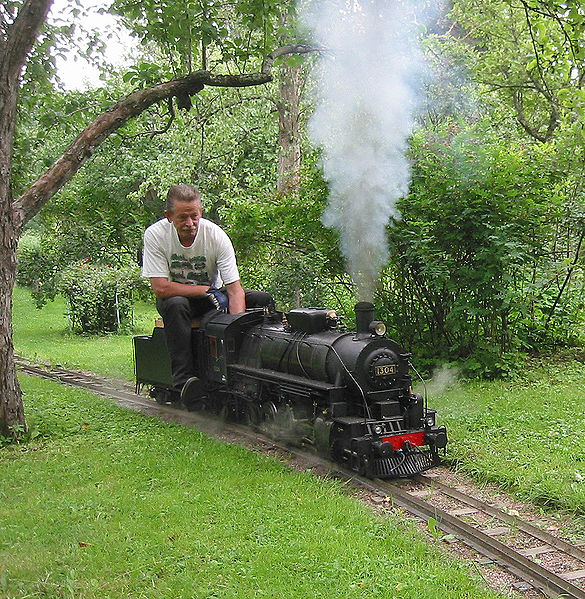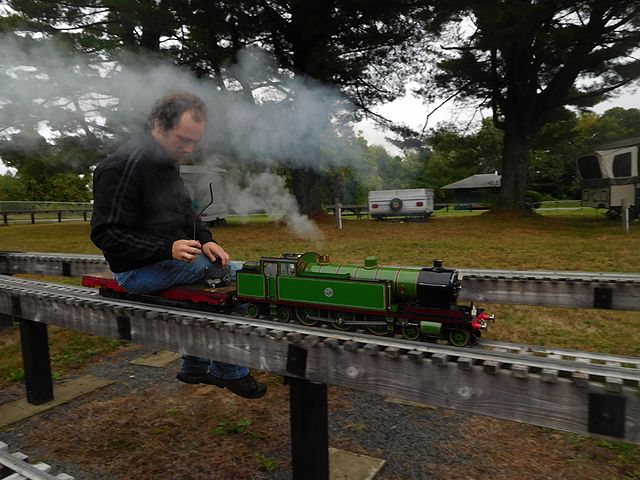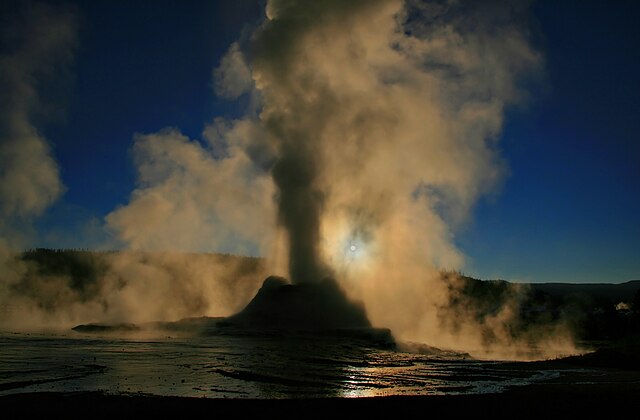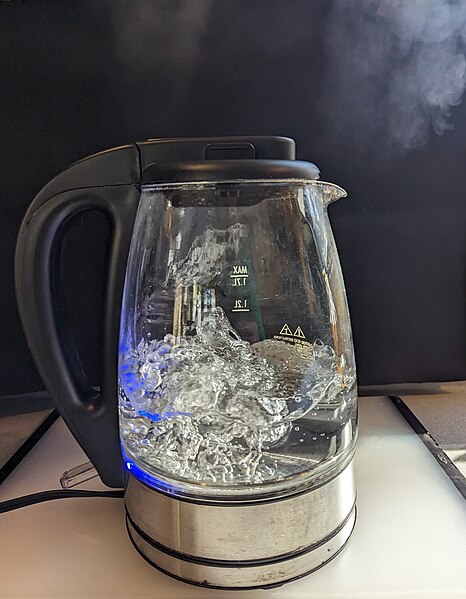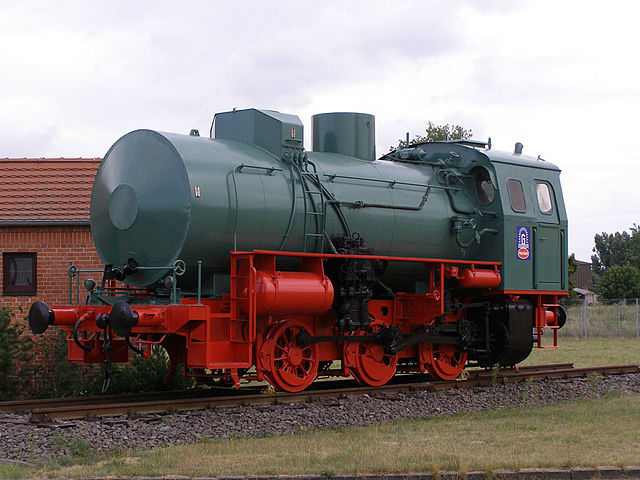Live steam is steam under pressure, obtained by heating water in a boiler. The steam may be used to operate stationary or moving equipment.
A hand-crafted, coal-fired, 1:8 scale 2-10-0 'live steam' locomotive in 7+1⁄4 in (184 mm) gauge
A "high line" representation of a Whitelegg-designed Baltic Tank in LT&S Livery. This engine runs on a track gauge of 3.5 inches and is powerful enough to pull several people. High lines are a configuration of a continuously elevated track and riders sit side-saddle or with legs straddling the track depending on lineside clearances.
A live steam festival with equipment on display ranging from small stationary engines to full-size locomotives. Porvoo, Finland, 2003
A propane-fired 1:8 scale live-steam train running on the Finnish Railway Museum's miniature 7+1⁄4 in (184 mm) track
Steam is a substance containing water in the gas phase, often mixed with air and/or an aerosol of liquid water droplets. This may occur due to evaporation or due to boiling, where heat is applied until water reaches the enthalpy of vaporization. Steam that is saturated or superheated is invisible; however, wet steam, a visible mist or aerosol of water droplets, is often referred to as "steam".
Liquid phase eruption of Castle Geyser in Yellowstone Park
Boiling water creating steam in an electric kettle
Fireless steam locomotive Despite the resemblance to a boiler, note the lack of a chimney and also how the cylinders are at the cab end, not the chimney end.

